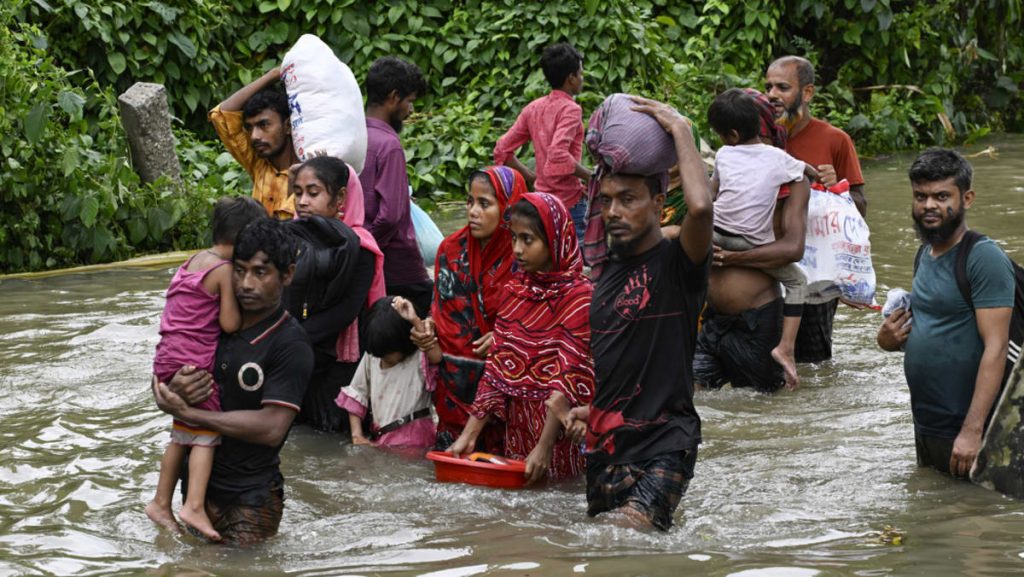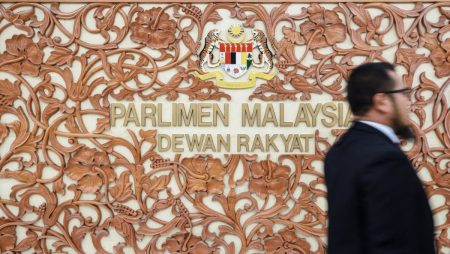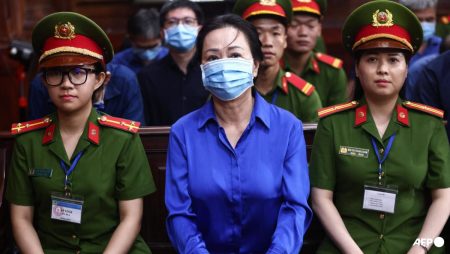In India’s Tripura state, more than 23 people have died due to severe flooding since Monday. The floods have also affected Bangladesh, with the latest death toll of 15 including fatalities in cities along the southeastern coast such as Chittagong and Cox’s Bazar, which houses around a million Rohingya refugees. The city of Comilla near the border with Tripura state in India has also been badly hit. Nearly 190,000 people have been taken to emergency relief shelters, with a total of 4.5 million people affected in some way by the floods.
The flooding has caused widespread devastation in both India and Bangladesh, with both countries facing significant challenges in providing assistance to those affected. In India’s Tripura state, the death toll continues to rise as rescue operations are ongoing to reach those who are stranded and provide necessary aid. In Bangladesh, areas along the southeastern coast have been hit hard, with major cities like Chittagong and Cox’s Bazar seeing significant damage. Emergency relief efforts are underway to provide shelter and support to those affected by the floods.
The situation in both India and Bangladesh highlights the vulnerability of communities to natural disasters such as flooding. The impact of the floods on infrastructure, homes, and livelihoods is likely to be substantial, requiring long-term recovery and rebuilding efforts. The presence of Rohingya refugees in Cox’s Bazar adds an additional layer of complexity to the relief efforts, as resources are stretched thin to accommodate their needs as well as those of the local population.
The flooding in India and Bangladesh serves as a reminder of the need for effective disaster preparedness and response mechanisms in vulnerable regions. Climate change is expected to lead to more frequent and severe weather events, such as floods, which will continue to pose challenges for countries like India and Bangladesh. The importance of international cooperation and support in times of crisis is crucial in ensuring that affected communities receive the assistance they need to recover and rebuild their lives.
As the floodwaters recede and the extent of the damage becomes clearer, both India and Bangladesh will need to coordinate their efforts to prioritize the most urgent needs of those affected. This includes providing emergency shelter, food, and medical aid to those who have been displaced or injured by the flooding. Long-term recovery efforts will also be necessary to help communities rebuild and recover from the devastation caused by the floods.
In the aftermath of the floods, it is crucial for governments, humanitarian organizations, and the international community to work together to ensure that those affected receive the support and assistance they need to rebuild their lives. This includes providing access to clean water, sanitation, and healthcare services to prevent the outbreak of waterborne diseases and other health risks. By coming together to address the immediate and long-term needs of those affected by the floods, India and Bangladesh can work towards a more resilient future in the face of ongoing climate challenges.













